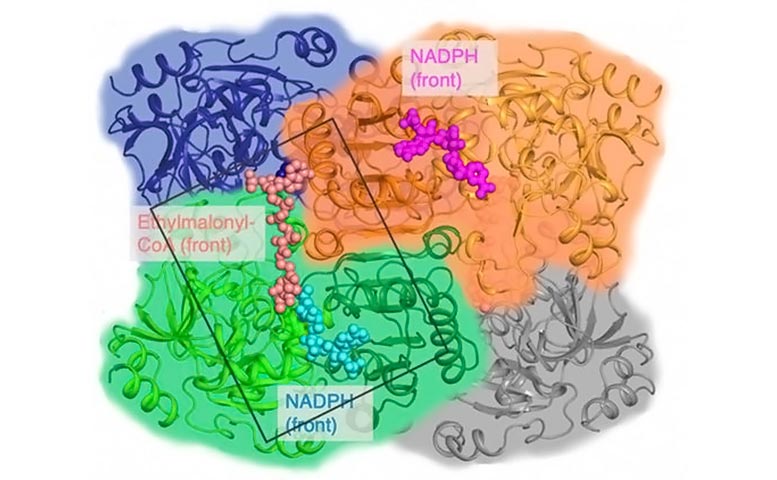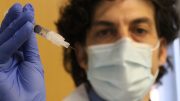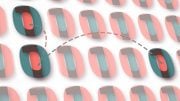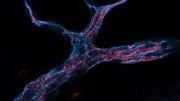
Biomolecular imaging reveals the structure of a type of enzyme called Enoyl-CoA carboxylases/reductases. These enzymes, which are involved with photosynthesis, are extremely effective at fixing carbon dioxide and removing it from the atmosphere. Credit: Stoffel et al., 2019 PNAS, https://doi.org/10.1073/pnas.1901471116
What Is Biomolecular Imaging?
Just like an auto mechanic or automobile engineer needs to understand the components of every system in many kinds of vehicles, scientific researchers need to understand the components of biological organisms, such as animals, plants, and microbes. Many layers of biological systems, including molecular components, underpin how organisms live and behave.
Seeing what something looks like can help us understand how it works, including at the molecular level. Because molecules are too small for scientists to directly see or manipulate them, scientists use a range of approaches to study them indirectly. Scientists can use visible, “regular” light to take images of molecules using special dyes. Another approach is to create an image with powerful microscopes, such as those that use wavelengths of light that can’t be seen by the human eye, such as X-rays or infrared light. These biomolecular imaging techniques, together with other indirect ways of understanding molecules, are critical in scientists’ efforts to understand complex biological systems.
Biomolecular Imaging Facts
- A fungal protein may hinder formation of certain degenerative diseases. Here’s what that hinderance looks like.
- Scientists can decipher 3-D structures of proteins from tiny crystals that are about one-fiftieth the width of a human hair.
- A special strain of soil bacteria can produce highly toxic compounds to protect itself from other organisms without harming itself.
DOE Office of Science & Biomolecular Characterization and Imaging Science
Biomolecular Characterization and Imaging Science (BCIS) supports two major areas. One area develops advanced technologies to make images of living plants and microbial systems for bioenergy research. These systems use both visible and laser light and combine multiple imaging approaches to make images of live, functioning systems.
The other area of BCIS develops technologies to characterize biological molecules and systems using imaging based on special types of light, including X-ray and ultraviolet light. Most of these technologies are located at facilities supported by DOE’s Basic Energy Sciences program. These techniques make it possible for scientists to use a range of indirect characterization approaches to understand systems’ composition and structure at scales down to single atoms.
Other advances allow scientists to use electron microscopes (EM) to characterize biological molecules and systems. One new technique, “Cryo-EM,” allows scientists to create images of cryo (frozen)-preserved molecules, molecular systems, and cells to understand their 3D structure with much easier preparation than older techniques.









Be the first to comment on "Science Made Simple: What Is Biomolecular Imaging?"